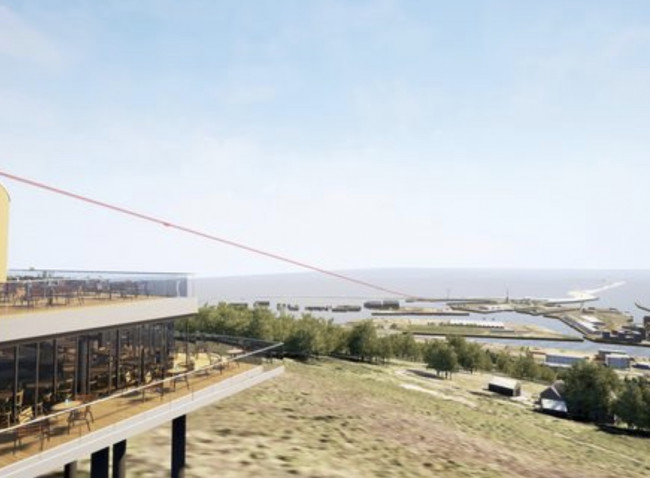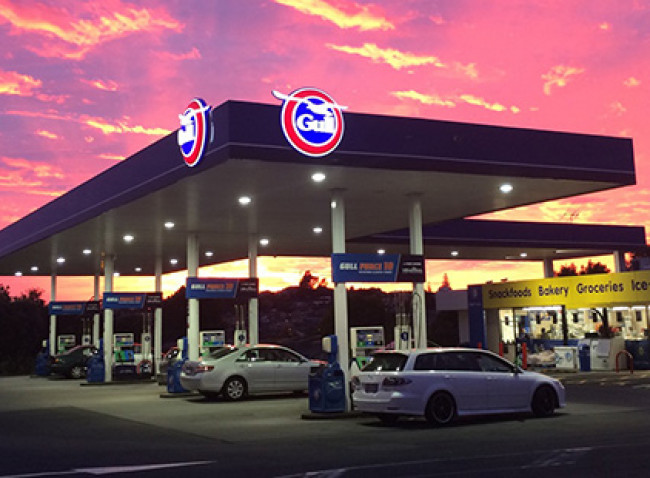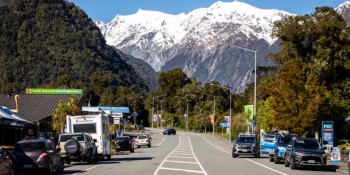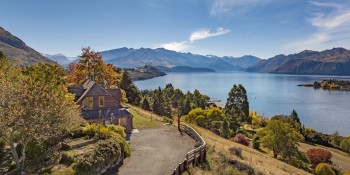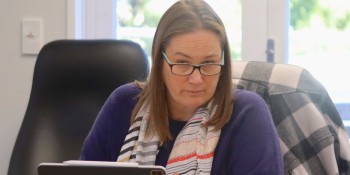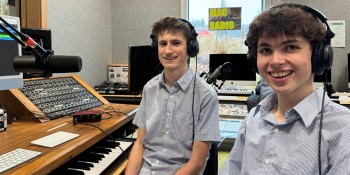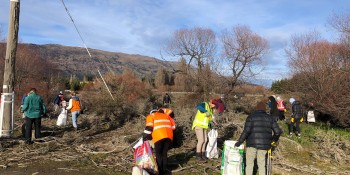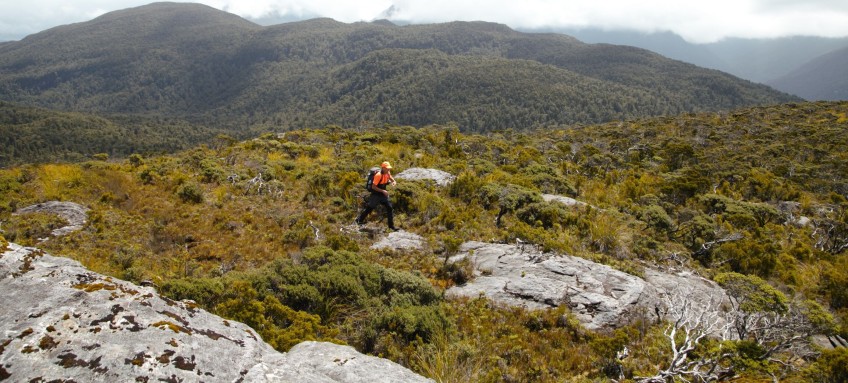
DOC's $45 million commercial sponsorship juggling act
The Department of Conservation does valuable work based on commercial sponsorship. But how does it avoid conflicts of interest when it comes to being the regulator of commercial access to our National Parks and sensitive landscapes? This story is part of the Crux partnership with the National Business Review.
 Corporate sponsorship can be tricky. It is usually an extremely nuanced balancing act between the needs of the sponsor and the goals of the organisation being sponsored.
Corporate sponsorship can be tricky. It is usually an extremely nuanced balancing act between the needs of the sponsor and the goals of the organisation being sponsored.
So, the Department of Conservation is understandably proud of the exclusive family of sponsors who between 2011 and 2020 will have kicked in $45 million, in cash and kind, towards protecting our landscapes and endangered species.

DOC's Dr Kay Booth - nurturing commercial sponsors while keeping things tight on the regulatory front. A fine line.
The person at the centre of this achievement does not even have a commercial background. Kay Booth is Deputy Director-General Partnerships at DOC. She has a Geography PHD from Otago University and a string of formidable conservation credentials. Ironically one of her most successful strategies with potential corporate sponsors is to give them a good old-fashioned grilling over why they want a DOC relationship.
“We actually start our conversation by talking about values. We talk about our vision and our expectations together and if we don't have alignment, we’ve stopped the conversation and we've said no to businesses, large national corporates, who have sought a partnership with us. We've stopped these conversations because it's not going down the track of actually providing a strong basis for an ongoing partnership.”
One of the reasons that DOC can stop commercial conversations so firmly is that the Government’s funding of DOC does not officially depend on any matching funding from sponsorship. The sponsorship money is important to DOC, but Kay Booth emphasises that it funds additional projects – not core pre-existing projects.
She has a strong hand to play when it comes to having commercial discussions with prospective corporate sponsors. It’s hard to imagine a more powerful image than Air New Zealand flying an endangered, flightless bird from one end of the country to the other in an aircraft emblazoned with our national fern. Patriotism, conservation and “doing good” does not come in a tidier package.

Real Journey's Paul Norris - helping to look after Cooper Island in Dusky Sound is a win-win for DOC and passengers on the company's overnight Fiordland cruises.
It’s for that reason that corporates often beat a path to Kay’s door hoping to attach their brand to the same robust and pristine values. She’s well aware though that the DOC brand is in many ways more precious than anything that anyone on the other side of the table can offer.
“I'm really mindful that we're a government agency and we're here to serve New Zealanders - that's our job. So, what does that mean in terms of engaging with business through partnerships? It's got to be about achieving more conservation through restoration, reach and connection. Those are the three measures that we apply to our partnerships. I think of having the people of New Zealand on my shoulders. I think of the integrity of our role and how to ensure that what we're doing meets the expectations of New Zealanders. That's very important for us.”
One of the companies that has met DOC’s high standards for partnerships is Queenstown’s Real Journeys. The company was set up in 1954 by tourism pioneers Les and Olive Hutchins who operated down in the Manapouri and Doubtful Sound area. Over sixty years later Real Journeys is one of the country’s tourism giants running the iconic TSS Earnslaw on Lake Wakatipu, the Christchurch Antarctic Centre as well as operating Cardrona ski field and numerous scenic flight and Fiordland cruise experiences.
Real Journey’s General Manager Paul Norris recalls the initial approach to DOC and how the company was quizzed in some detail about what they wanted from the relationship. Having passed that authenticity test, Real Journeys then was involved in the selection of a project that would fit with DOC’s goals but also align with what Real Journeys wanted to achieve. In a nutshell that wanted a project that was located on or near one of their Fiordland cruises and something that their customers could appreciate and be involved with.
“We wanted something that above all was viable” explains Norris. “It would not have been a good look for either us or DOC if the project was not ultimately successful.”

Predator traps on Cooper Island in Dusky Sound - funded by Real Journeys and benefiting DOC as well as Real Journeys' clients.
The decision was made for Real Journeys to support the removal of predators from Cooper Island in Dusky Sound. “We put in an initial $400,000 from the core company, with an additional $100,000 from the Les Hutchins Conservation Foundation. That got the project off to a strong start, and since then we’ve been contributing up to $100,000 a year to the project, a sum that is now partly met by passengers on our multi-night cruises that include Dusky Sound. That way they get to not only experience Fiordland but contribute to the future quality of that environment.”
A potential conflict in the arrangement is the fact that many companies, including Real Journeys, rely on DOC for access concessions that allow them to operate in environmentally sensitive areas like Fiordland.
So how does DOC manage partnerships with companies that also rely on DOC as a regulator for the survival of their business?
“So sometimes the conversation can get caught between those two aspects – partnership and regulation” explains Kay Booth. “For us there is a great big solid concrete wall between the two parts of our organisation and in our partnerships, we make it crystal clear what the partnership is about and what it's not about. And it's not about an easy ride down the regulatory road.”
One organisation that has partnered with DOC without any potential regulatory issues is Kiwibank.
Their brand and sponsorship lead is Kim Waghorn who says that the relationship with DOC took quite a long time to explore. It was a big step for Kiwibank as they really only had one other major sponsorship in place, which was the New Zealander of the Year awards. Kiwibank did appeal to DOC though because of the natural “kiwi” fit plus the sheer reach that Kiwibank could achieve in terms of getting the conservation message out to the population at large.
“Eventually DOC offered us a bit of a buffet of conservation projects and there was lots of really good stuff in there. The conservation dogs programme though really stood out for us because of the very engaging nature of dogs and the ability of the dogs to help us connect with all different types of New Zealanders.”

Kiwibank's Kim Waghorn - funding DOC's conservation dogs has helped DOC with biosecurity and monitoring predator control, but it has also helped Kiwibank build its brand.
Kim Waghorn is reluctant to put a dollar figure on the amount that Kiwibank puts into the DOC conservation dogs programme, but the results have been impressive with their funding helping to increase quarantine activity at key biosecurity locations by 47 per cent and the surveillance of pest-free islands by 35 per cent.
There are nine major corporate partnerships in place with DOC but Kay Booth is anxious to stress that the ultimate goal is to extend partnerships way beyond the world of business.
“Business is only one of the parts of story. What people fail to see is us working with iwi, with community groups, NGO’s, government and so on, and we're increasingly trying to go towards a multilateral approach. How do we bring together that collective of parties so that we can achieve ecological restoration on a very large scale that everybody plays a part in? The business world is an important part of that, but not the only focus.”
What Kay Booth is describing is a national, social eco-system of support for DOC’s work, and she’s well on the way to achieving that. It is no small feat.
Main Image: Conservation work on Cooper Island in Dusky Sound. Funded by Real Journeys for DOC.












